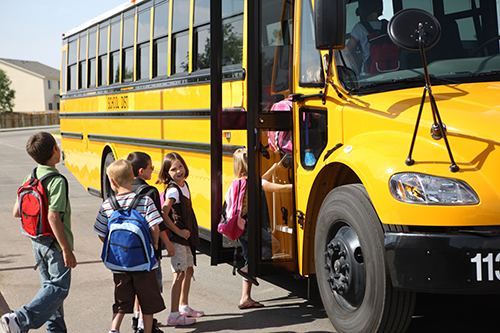How Assistive Technology Helps with the Back-to-School Transition
Updated on October 9, 2024 Listen to the Podcast
Transitions are difficult for any child, but for children with developmental disabilities, reactions and responses to change are often more extreme. The summer can be a blissful period for parents of children with special needs. They can attend directly to their child, offer developmentally appropriate activities that the child enjoys, and ensure safety at all times. Of course, every summer must come to an end, and there is a great deal of stress that accompanies each new school year as they face new transitions with their child.
Resistance to change is not a behavior issue, nor is it rooted in being directed away from a desired activity. No, it is simply that most children with autism rely on the predictability of existing routines. Any deviation from the norm can be stressful, but the back-to-school transition often introduces several new routines all at once. It does not have to be overwhelming, though. An assistive technology like AngelSense can be an incredibly effective tool as children navigate being back at school.
Introduce a Reward Chart to help build a daily routine that provides a visual aid to help children see their progress and accomplishments, reminders of what is expected; and motivation to continue reaching for those goals. Involve your child as much as possible. Allow them to place stickers on the chart, include them in making a sticker exchange system, and guide them to bigger rewards for more stickers earned.
– Frank Campagna, author of the blog “Autism Daddy”
1. Encouraging Your Child to Learn Independence
Regardless of age, it can be nerve-wracking for parents even to put their special child on the school bus. For children with autism, wandering is a life-threatening concern. Children have eloped from school grounds because there was confusion during the few seconds that the child was getting off the bus and being directed towards a classroom. However, an Assistive Technology like AngelSense alerts parents, teachers, and other caregivers the moment a child veers from their expected routine, allowing parents to quickly send an alert to first responders if the child wanders.
The AngelSense Assistive Technology has a real-time map that informs you any time your child has deviated from a pre-established or typical route. This means that you can step back and allow your child to navigate from bus to school, classroom to classroom, and bus to home while still being available if things do not go as expected. It is essential to allow children with autism as much independence and basic freedom as they are capable of handling within the range of their capabilities, and a GPS tracker helps facilitate meeting independence goals without compromising safety. Frank Campagna, also known as Autism Daddy, says that knowing that his child is where he is supposed to be – and that he can quickly take action if he is not – gives him peace of mind.

2. Promoting Safety and Security as New Routines are Built
Something as simple as a new hallway can trigger a meltdown for a child with autism. During the previous year, perhaps their classroom was the second door on the left, and now it’s the third. During this time of transition, a parent can use the AngelSense 1-Way calling feature during different periods of the day to monitor the child’s stress levels. If the child is in the midst of a meltdown, 2-Way Voice allows parents to communicate directly with their child, often relieving stress from a teacher or administrator who is still getting to know the student. Hearing your voice and reassurance could dramatically influence their response and offer feelings of safety. Transition can be such a challenge, but the soothing voice of a parent can be a part of the child’s day at any moment until they are more secure in their surroundings.
Maya A

3. Offering Relief and Peace of Mind to Family and School Staff
The special needs child is not the only one transitioning. Parents also have a new routine each morning, which includes getting the child ready for their day. Rather than manage their own calendar to check in with teachers or other administration, all they have to do is check the app. The app also alerts parents to any changes in routine, so they can accomplish what needs done with reassurance that their child is where they are supposed to be.
Teachers are also able to have access to the benefits of the AngelSense GPS Tracker. The team of professionals that ensures the child’s safety at school can have the same benefits parents do at home, offering better protection for children with autism. Constant supervision is not always realistic, even in the most secure areas, and a GPS tracker gives everyone involved with the child the tools to keep them safe.
There are so many benefits to using a GPS tracker in the back-to-school transition. It is an exciting, but stressful, period that can result in anxiety for the child, the parents, and the school staff. Every child with autism deserves to learn independence whenever possible, but everyone in the community wants them to be able to do so safely. The GPS tracker is the solution that many parents rely on, because it has proven to make the lives of children with special needs easier. A parent can’t be with their child every second of their school year, but AngelSense can offer children the support they need to succeed outside the home.


